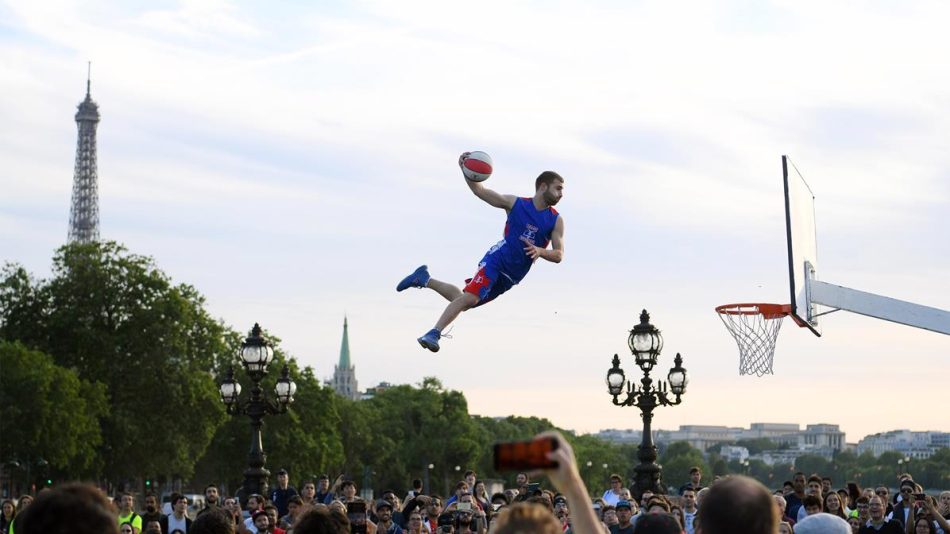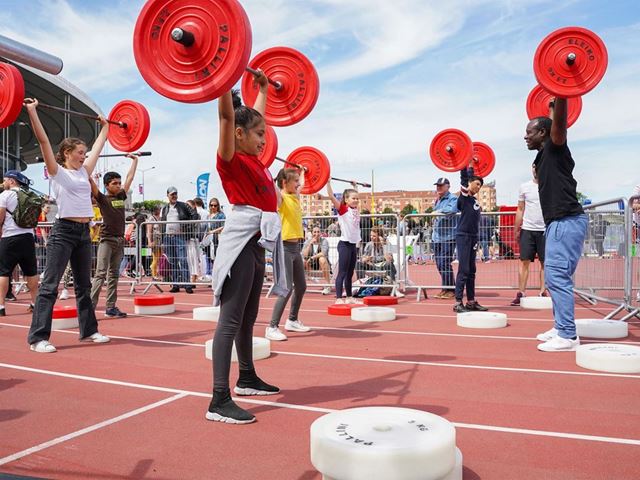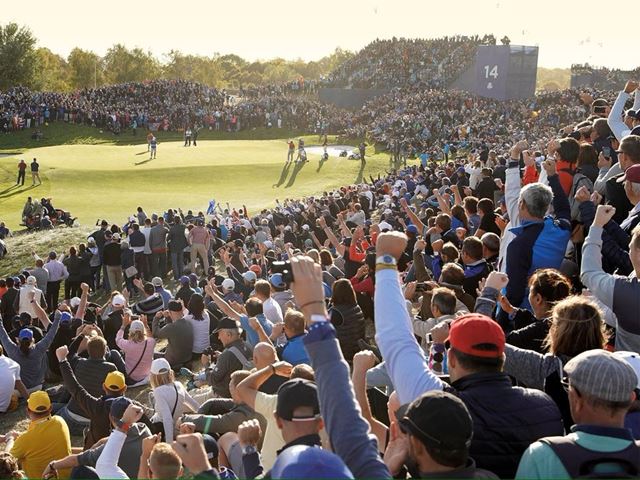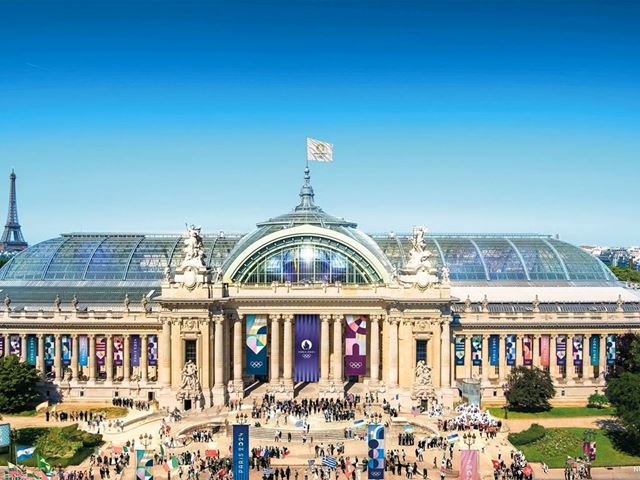Games for a new era

International Olympic Committee
24 Jul 2023 – In one year, France and Paris will host the Olympic Summer Games. In doing so, Paris will join London (1908, 1948 and 2012) and later be joined by Los Angeles (1932, 1984 and 2028) as three-time host cities.
By Alain Lunzenfichter
Since the Paris Games of 1900 and 1924, this great sporting festival has changed significantly, and organising the event today is a very different beast. The profile and wider impact the Olympic Games enjoy in the 21st century is barely comparable with the situation at the start of the previous century. Put simply, the world has changed, sport has changed and the IOC has changed – meaning the Olympic Games have also changed. The figures speak for themselves: we’re no longer in the same world, no longer on the same sporting planet.
Back in 1924, the event was still very much in its infancy; today, it is the equivalent of 32 world championships taking place at the same time, the vast majority in the same city. Back then, much of the event was concentrated around facilities belonging to a single club, the Racing Club de France. One of the biggest clubs in the world, granted, but a scenario that would no longer be possible today: multiple venues are required, which only a country can provide. While Paris 1924 was the first edition to feature an Olympic Village, a number of participants were still put up in hotels. Paris 2024, on the other hand, has set up an Olympic Village that will accommodate more than 15,000 people.
The primary venue at the 1924 Games, the Stade de Colombes, will nevertheless once again have the privilege of hosting a sports competition one century on: hockey. The renovated Yves-du-Manoir Stadium (as it is officially known) will also have a post-Games legacy, as it is set to become the headquarters of the French Hockey Federation.


Impressive numbers
The record-breaking numbers seen in the post-Great War period have been far surpassed today. The Olympic Games, once the bastion of amateur sport, have moved triumphantly into the professional era and gone truly global. In 1924, the athletes came from 45 countries, 27 of which were European; in 2024, Europe will no longer be the continent sending the most nations to the “City of Light”. The number of athletes set to compete – 10,500 – is also a world away from the 3,089 who took part in 1924.
Another major development next year will see advances in the participation of female athletes (135 competed in 1924)*. Olympic Agenda 2020, adopted in 2014 at the IOC Session in Monaco, marked a real turning point in this respect: the Olympic Games in Paris next year will be gender-equal for the first time in history, with the same number of men and women (5,250) competing in 329 events across 32 sports. Over the past century, opportunities for travel have also increased dramatically as travel itself has become global, significantly changing things for spectators attending the event. In 1924, there were around 600,000 spectators over the course of the Games, though it’s impossible to know how many of those in Paris between 5 and 24 July 1924 came from abroad. This time, almost 10 million tickets are on sale for spectators all over the world – 13.5 million if we include the Paralympic Games, which didn’t exist in 1924.
But what has revolutionised the scale of the Olympic Games more than anything has been the increasingly important role of the media. For decades, the market consisted solely of the written press and photo journalists. The advent of radio provided a platform for the Olympics to develop a voice from 1924 – this helped create suspense and capture the public imagination, as images of the sporting action were painted through words.
Since then, television has taken the Games to a whole new level. While there were only 685 journalists in attendance in 1924 – including a small number of women – more than 25,000 media personnel (mostly from television) will be present next year, and the Games, broadcast in more than 220 countries and territories, will be beamed into households across the planet. Therein, in fact, lies their success: while the 1924 Olympics were essentially for a French audience, Paris 2024 will be watched throughout the world. And in another major development, a village has been built specially for the media, a stone’s throw away from Paris-Le Bourget Airport and the Stade de France.


A century on, then, the Games are completely different. A hundred years ago, they were simply an international sports event. Now – and throughout the 10 years or so between the start of the candidature phase and the Games next year – the aim has been to make sure every person in France feels part of the process.
Many other towns and cities will have the privilege of hosting events; Paris 2024 will be Games not just for the capital, but for the whole of France. Marseille, Châteauroux, Lille and even Tahiti will stage Olympic competitions, although most events will be taking place in Paris and the Paris region.
The day after the Olympic flag was handed over to the city of Paris, a team from Paris 2024 began a journey across France with three flags, featuring the Olympic rings, the Paralympic Agitos and, of course, the Paris 2024 emblem. This was just the first stage in the Olympic adventure. The second came in the shape of “Terre de Jeux 2024”, a label designed to connect people and groups involved in sport – from National Federations and local organisations to French embassies – to encourage joint projects and make sure the Games engage the country as a whole.
Paris 2024 President Tony Estanguet said of the label: “My ambition is for us to use the Games to further strengthen the position of sport within society, and to achieve this, we must engage with all regions. The driving forces for increasing the reach of sport in this country are all the small towns, where we all started out.”
Olympic Day on 23 June has also been harnessed to generate enthusiasm for sport and the Games across France. Sporting greats have taken part in the various editions, sharing their passion and interacting with members of the public, while participants have been able to enjoy all manner of sports demonstrations. And as part of the “Terre de Jeux 2024” programme, a global 24-hour sports relay was organised, starting in New Zealand and ending in Tahiti, to mark the 500-day countdown to Paris 2024.
Half a million spectators for the Opening Ceremony
In a historic first, and a departure from previous editions, the Paris Opening Ceremony won’t be taking place inside the Olympic Stadium. With Artistic Director Thomas Jolly – Director of the Quai National Drama Centre in Angers, known for his 18-hour production of Shakespeare’s Henry VI at the Odéon theatre and a new version of Starmania – at the helm, the Opening Ceremony is set to light up the river Seine.
Paris 2024 is breaking new ground by taking sports competitions into the city; the same will be true of the Opening Ceremony. With 140 to 170 barges transporting the national delegations, the athletes’ parade will wend its way down a 6km stretch of the river between the Austerlitz bridge and the Trocadéro, where the final shows and protocol ceremonies will take place. The boats will be equipped with multiple cameras so that TV and online viewers can see the athletes up close. While around 60,000 spectators normally attend the Opening Ceremony, at least eight times as many will be present on the banks of the Seine, and more than 80 per cent will be able to attend free of charge. Eighty giant screens throughout Paris will allow everyone to follow the ceremony live.
As for where the Olympic cauldron, containing the flame that will burn throughout the Games, could go, Jolly certainly has a few ideas. “Leaving it on the water, like a floating candle, would be beautiful. But the flame needs to be big and mobile, and resemble the emblem. The city will become the real-life backdrop for this unique event, and the various tableaux will showcase the monuments, bridges and cultural establishments along the banks of the Seine.”
While the Games will attract spectators from all over the world, there will also be places where people who haven’t been able to get tickets can follow the competitions: the fan zones, which of course didn’t exist in 1924; and especially Parc de la Villette, where “Club France” will be based, and which will be one of the official Live Sites next summer, with 200 hours of sports action being broadcast live. The park will be able to welcome between 50,000 and 100,000 people every day, and an extraordinary atmosphere is guaranteed.


Organising festive Games has been the guiding principle for Paris ever since the candidature phase – Games that break the mould and use monuments in the city and suburbs as the backdrop for competitions. Sport will be everywhere in Paris: fencing and taekwondo at the Grand Palais, beach volleyball at the Eiffel Tower, triathlon swimming in the Seine, and equestrian and modern pentathlon at the Château de Versailles. And the Organising Committee has decided that the urban sports and disciplines, featuring some of the younger participants, will be best served by being moved out of the more traditional arenas and into the very heart of the city. For more or less the duration of the Games, from 27 July to 10 August, Place de la Concorde will play host to BMX freestyle, breaking, skateboarding and 3×3 basketball.
For the first time in Olympic history, athletics and cycling, two of the major sports, will have events that are open to the general public, who will therefore be able to say that they have taken part in the Games. One of these mass participation events is the marathon, which will follow a symbolic route, on a looped circuit between Paris and Versailles, that ties into France’s revolutionary history. On 5 and 6 October 1789, with the capital suffering from bread shortages, between 6,000 and 7,000 women set out from Paris City Hall and marched on Versailles, to make Louis XVI aware of their plight and demand reforms – which led to the ratification of the Declaration of the Rights of Man and of the Citizen and saw the King return to the Tuileries.
The Paris stretch of the route will also take runners past the Palais Garnier opera house and the Louvre pyramid. Double Olympic marathon champion, Kenya’s Eliud Kipchoge, himself came to the capital to launch the event. For those who don’t feel they have done the training to tackle the marathon’s 42.195km, a 10km run will also be open to the public. The other mass participation event will be a cycling race, which will take place in Parc de la Courneuve, not far from the Stade de France.
The revolutionary spirit is also reflected in the Paris 2024 mascots. Unlike most editions since 1972, the Organising Committee decided not to select an animal as the mascot, opting instead for the “Phryges”. An unorthodox choice to many foreign onlookers, but very much in keeping with the tone Paris 2024 organisers wanted, the “Phryges” are based on an item of clothing that is a symbol of freedom, has been part of history for centuries, and dates back to ancient times. Having featured on certain flags in Latin America before being widely popularised by French revolutionaries, the Phrygian cap has now become a familiar symbol in France. It is a symbol of revolutions, the French Republic and freedom, and can be seen on the French national icon, Marianne, depicted in busts at town halls and on stamps. The National Archives show records of Phrygian caps being worn during the construction of Paris’s Notre-Dame cathedral in 1163.
Sustainable Games
Faced with the environmental and social issues of the 21st century – humanity’s greatest challenge – the world of sport needs to assume its share of responsibility. By halving Games-related emissions and offsetting more than the CO2 emissions generated, the Paris 2024 Games will be sustainable in a way never seen before. And because the Games provide an opportunity to think bigger and look to the future, they have to help pick up the pace of the environmental transition in sport, regions across France and major events. This is why the city of Paris will be opening 60km of cycling lanes to link all the competition venues, complete with dedicated route signage. The lanes closest to the venues will be decorated with the Games pictograms and colours. These Olympic lanes will be kept as a post-Games legacy, becoming part of the daily lives of Paris residents.
The Olympic lanes, and the many other innovations, are all part of the transformation of Paris which, in one year’s time, will play host not just to a sporting event, but an experience for everyone – athletes, spectators, residents and the watching world.
This is an edited version of an article originally published in Olympic Review.
* Note that these figures can vary slightly depending on the historical documents consulted.





